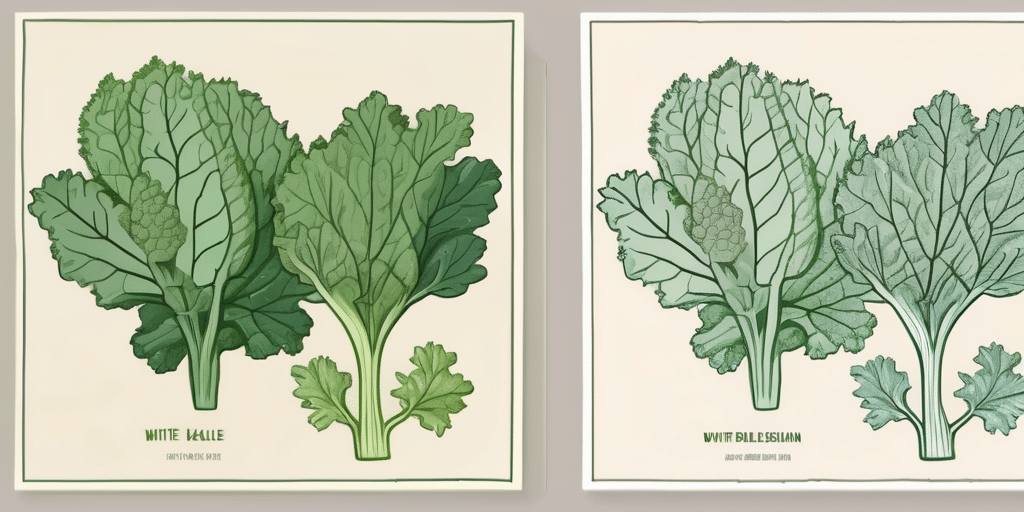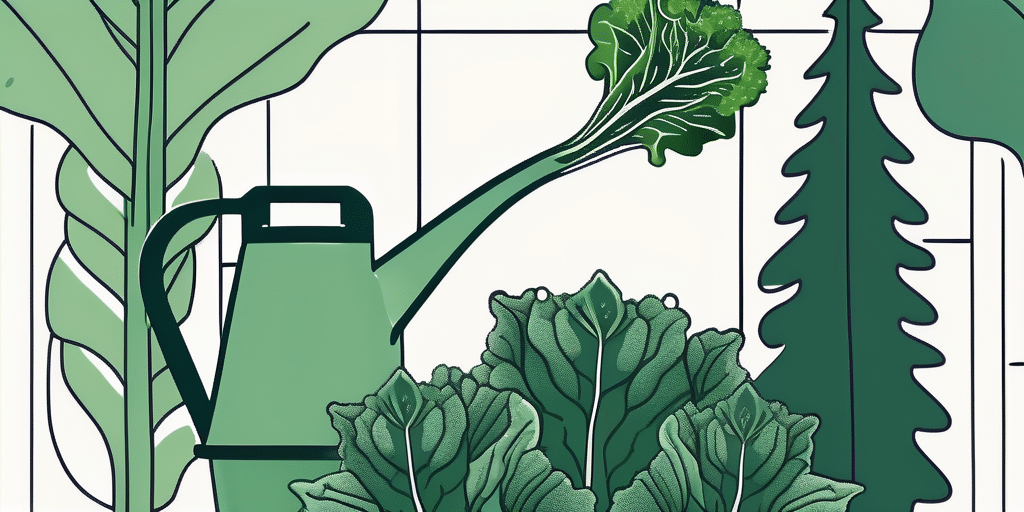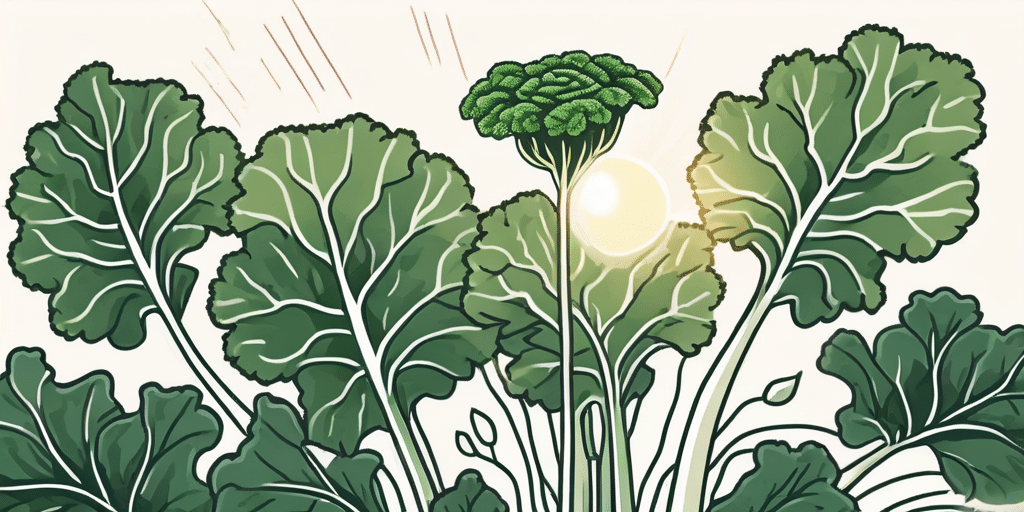Are you a kale enthusiast in Oregon? If so, you’re in luck! In this article, we will explore everything you need to know about growing Dwarf Siberian Kale in the beautiful state of Oregon. From when to plant this nutritious green to how to care for it, we’ve got you covered.
Climate & Hardiness Zones in Oregon
Before embarking on your kale-growing adventure, let’s take a quick look at the climate and hardiness zones in Oregon. The state is known for its diverse climate, ranging from the cool coastal areas to dry desert-like regions in the east.
In general, most parts of Oregon fall within hardiness zones 6a to 9b. However, some areas in higher elevations might be in zones 5a or 5b. It’s crucial to know your specific hardiness zone to ensure the best chances of success.
Oregon’s climate is greatly influenced by its varied topography. The western part of the state experiences a maritime climate, characterized by mild, wet winters and cool summers. In contrast, the eastern part of Oregon has a more continental climate, with hot, dry summers and cold winters. This diversity in climate allows for a wide range of crops to be grown throughout the state.
When considering planting kale in Oregon, it’s essential to factor in not just the hardiness zone but also the microclimates within your specific location. Microclimates can be influenced by factors such as proximity to bodies of water, elevation, and urban heat islands. These nuances can impact the success of your kale crop and should be taken into account when planning your garden.
When to Plant Dwarf Siberian Kale in Oregon
Timing is key when it comes to planting Dwarf Siberian Kale. As a cool-season crop, it thrives in temperatures between 40°F and 75°F (4°C and 24°C). To get the most out of your kale, here are some planting tips:
- Start seeds indoors 4-6 weeks before the last expected frost date. This will give them a head start before transplanting them outdoors.
- If you prefer direct sowing, wait until the soil is workable and the danger of frost has passed. In Oregon, this is typically around early spring or late summer for a fall harvest.
- Prepare the soil by removing any weeds and adding organic matter, such as compost or well-rotted manure. Kale prefers well-drained soil with a pH level between 6.0 and 7.5.
- Sow the seeds ¼ to ½ inch deep, spacing them about 12-18 inches apart. If you’re planting in rows, leave around 24-36 inches between each row.
- Water the seeds gently, ensuring the soil stays moist but not waterlogged. Keep an eye on the moisture level throughout the germination process.
When selecting a location for your Dwarf Siberian Kale, choose a spot that receives full sun to partial shade. Kale plants thrive in sunlight but can tolerate some shade, especially in hotter climates. In Oregon, with its mild and temperate climate, finding a balance between sun and shade can help your kale plants flourish.
Consider using mulch around your kale plants to help retain soil moisture and suppress weed growth. Organic mulches like straw or shredded leaves work well and also break down over time, adding nutrients back into the soil. Mulching can also help regulate soil temperature, keeping the roots of your kale plants cool during hot summer days.
When to Harvest or Pick Dwarf Siberian Kale in Oregon
One of the most rewarding moments for any gardener is harvesting the fruits of their labor. For Dwarf Siberian Kale, abundant harvests are possible if you follow these guidelines:
- Start harvesting when the leaves reach a desirable size, usually around 2-4 inches long. Simply snip the outer leaves from the plant, leaving the center intact for continued growth.
- Regularly harvest your kale to encourage new growth. This will extend the overall harvest period.
- Avoid waiting too long to harvest, as mature leaves tend to develop a slightly bitter taste. However, some people prefer the stronger flavor of fully mature kale.
- In Oregon’s milder coastal areas, kale can be grown year-round with proper protection, making it a fantastic addition to a winter garden.
Dwarf Siberian Kale, also known as Russian Kale, is a cold-hardy variety that thrives in Oregon’s temperate climate. This leafy green vegetable is not only delicious but also packed with nutrients, making it a popular choice for home gardeners and chefs alike. The cool, moist conditions of Oregon provide an ideal environment for Dwarf Siberian Kale to flourish, resulting in tender and flavorful leaves.
When harvesting Dwarf Siberian Kale in Oregon, consider using scissors or garden shears to ensure clean cuts and minimize damage to the plant. By harvesting the outer leaves first, you allow the inner leaves to continue growing and producing new foliage. This method promotes a continuous harvest throughout the growing season, providing you with a fresh supply of kale for your culinary creations.
Frequently Asked Questions
1. Can Dwarf Siberian Kale withstand freezing temperatures in Oregon?
Yes, Dwarf Siberian Kale is known for its excellent cold tolerance. It can withstand frost and even temperatures as low as 20°F (-6°C) with proper protection.
Source: Oregon State University Extension Service
2. How often should I water my kale plants?
Kale prefers consistently moist soil. Water your plants regularly, aiming for about 1-1.5 inches of water per week. Adjust the frequency based on weather conditions, ensuring the soil doesn’t become waterlogged.
Source: University of California Cooperative Extension
3. Are there any pests I should watch out for when growing Dwarf Siberian Kale?
While kale is generally resistant to many pests, keep an eye out for aphids, cabbage loopers, and flea beetles. Regularly inspect your plants, and if necessary, use organic pest control methods like insecticidal soap or neem oil.
Source: National Sustainable Agriculture Information Service (ATTRA)
When planting Dwarf Siberian Kale in your Oregon garden, it’s essential to consider the overall health of your soil. Kale plants thrive in well-draining soil rich in organic matter. Consider amending your soil with compost or well-rotted manure before planting to provide essential nutrients for optimal growth.
Additionally, kale is a heavy feeder, meaning it requires regular fertilization to support its growth. Consider using a balanced fertilizer or a nitrogen-rich fertilizer every 4-6 weeks during the growing season to ensure your kale plants have the nutrients they need to flourish.
Join How to Grow Everything for More Expert Gardening Tips!
Ready to transform your green space into the garden of your dreams? Subscribe for free to How to Grow Everything and unlock a treasure trove of personalized gardening advice tailored to your Oregon grow zone. Whether you’re a beginner or an experienced gardener, our family is here to help you learn and grow. With us, you’ll receive the best gardening tips, special offers, and information to nurture your love for gardening. No spam, just pure gardening gold, 100% free, delivered straight to your inbox. Start your journey to a bountiful garden today!






